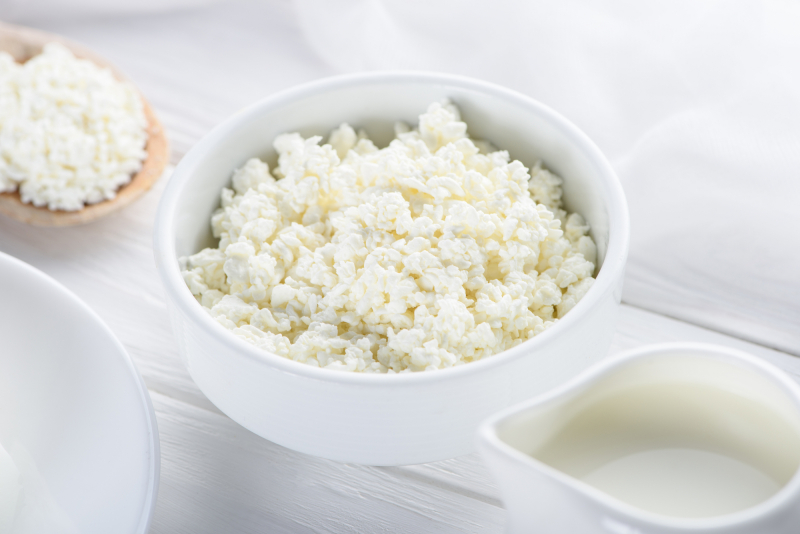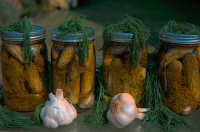I first tried tvorog before I'd ever set foot in Russia. My Russian teacher in Israel gave me a big tub and I took one taste and thought: “I’m not sure this strange sour cheese is something I’ll be eating ever again.” After some convincing and a more well-rounded introduction to tvorog on Russian soil, I discovered I’m actually a fan! It turned out that Russians rarely eat tvorog on its own. That’s just not how it’s done.
The two most common translations of tvorog are cottage cheese (common in the US) and quark (common in Germany). The process of making these different cheeses is quite similar: you take fermented, acidized or sour milk, and separate the curds from the whey. For cottage cheese, cream is added to the curds before they’re packaged, and for quark, the curds are not overly dried so the curds come out quite soft and creamy. Tvorog, on the other hand, is most often packaged as dry grainy pieces of curd.
Below are a few popular ways to eat tvorog.
Mix it with sour cream, milk, jam, sugar, condensed milk, honey or fruit. A few great combinations collected from my colleagues are below:
- banana, nuts and cinnamon
- milk, sugar and jam
- honey and berries
- sour cream and jam/sugar
- heavy cream
- banana and milk
- condensed milk
Syrniki
Available in many cafes around St. Petersburg, this is the perfect breakfast! For syrniki, tvorog is mixed with eggs, oil, sugar, flour, and baking powder and then fried in small patties. Almost like a mini fried cheesecake, it is absolutely delicious with Russian sour cream and jam! Make your own!
Photo by Max Nayman (@maxniceman) on Unsplash
Zapekanka or Tvorozhnik
A classic Russian-style cheesecake baked in the oven, zapekanka is made by mixing tvorog with butter, eggs, flour, sugar, salt, sour cream, and (sometimes) raisins. The result is a smooth and delicious cake, perfect for breakfast, and always great with some jam and sour cream. There are so many different recipes for this, but here’s one you can try.
Vatrushka with tvorog
A delicious dessert and perfect snack, a vatrushka is basically a round bun made of fluffy dough. The shape is similar to a donut and the center is filled with a tvorog, cream cheese, egg and sugar mixture, and it’s all baked in the oven. Fun fact: in Russian, the word vatrushka also means a snow tube of the kind that’s used to sled in the winter. Try it at home.
Tvorog-filled blini
By now you must surely know what blini are; but if you don’t, they are a traditional Russian pancake, thin like a crepe, and eaten with everything and anything you can imagine. You can learn how to make them here. It’s not uncommon to wrap a pancake around something delicious, and tvorog is no exception. Tvorog-filled blini are quite a common dessert or breakfast in Russia. Make your own at home!
There are literally a million different ways that you can prepare tvorog, be it savoury or sweet. A quick online scan will show you dishes like tiramisu, omelettes, cookies, pikelets, dumplings, and pies. Don’t be afraid, dig in and enjoy the delicious world of tvorog!
Learn more about delicious Russian food in this culinary journey, read about scary and delicious Russian food here, find out more about buckwheat and pelmeni, more about weird Russian foods here, and watch our international students try Russian food on YouTube.




